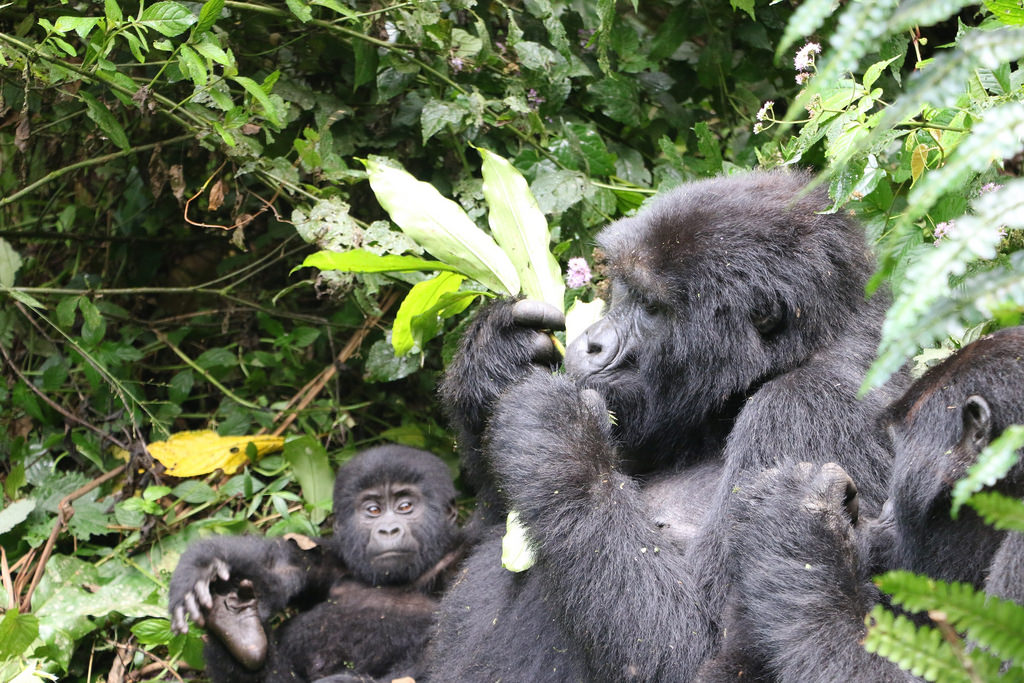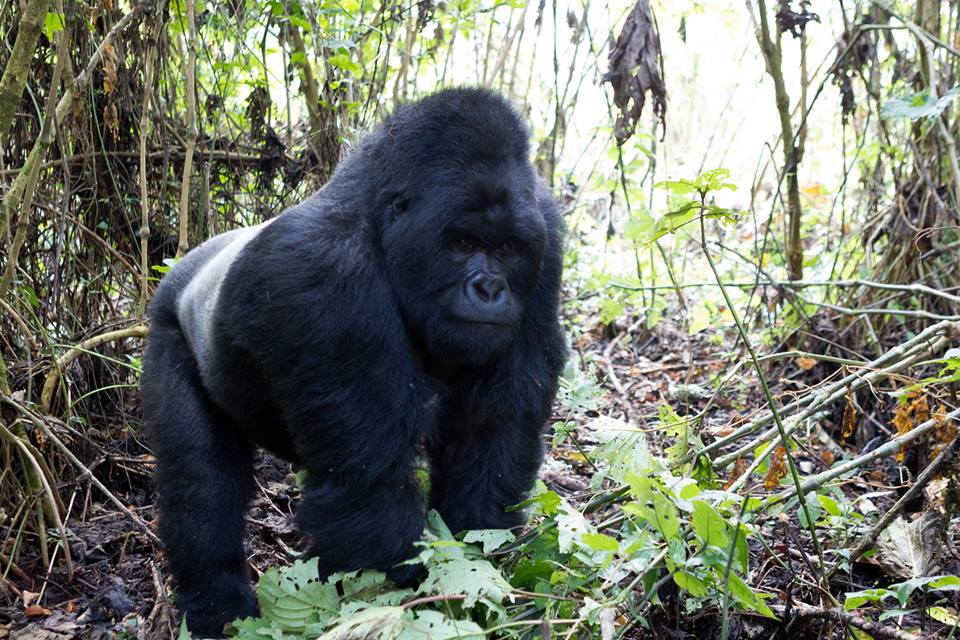About 900 mountain gorillas live in the shared-border forests that extend into Uganda, Rwanda and the Democratic Republic of the Congo (DRC). Following decades of decline due to poachers, civil war and diminishing forests, gorilla populations have begun to pick up in the last couple of years. In some respects, the growth of gorilla tourism may have helped protect these animals as the government receives funding for conservation and sees the economic benefit of protecting the animals and the national parks that serve as their homes.
Presently, approximately, 400 gorillas call the Bwindi Impenetrable National Park their home and of these, nine gorillas families each family usually consists of 10-15 members have been habituated, meaning that although they are still wild they have become accustomed to humans and are unlikely to attack. Well, it is possible to go gorilla trekking all year round, but you may face rain or more crowds during certain times of year.
The high season is June-September and December-February when Uganda has its dry season and Europeans have their holiday seven during this time you may experience rain in the forest. Gorilla trekking permits will be a bit pricier and more in demand during these times.Low season is considered March-May or October-November rainy seasons. While trekking during this time you may experience more rain in the forest, making for a muddier, more slippery climb. Conversely, during this time gorillas may be more likely to hang out in the low lands since food is abundant during the rainy season and they don’t need to search long and wide for meals. This means that your treks into the forest to find them will be shorter, often less than two hours.
The gorilla trekking guide waits for information from trackers on the location of the gorilla family. Gorilla trekking permits are a hefty expense at $600 per person for most of the year, with April and May at $350 per person (2014 prices). The maximum number of visitors per day is 72, divided into groups of 8 persons maximum and each group visits a different habituated gorilla family. The permit assigns you to a gorilla family and allows you to spend one hour with the family once your group finds them. However, each gorilla family is in a different area of the park, so your accommodation should be coordinated with the park entry point for that particular family. Even if you travel independently, it makes sense to find a local tour operator to help you secure your trekking permit and arrange transport, accommodation and other logistical support. The reality is that tour operators purchase the majority of trekking permits so it’s very difficult for individuals to buy them directly from the National Park. If you want to go during the high season (June-September) you’ll need to organize your gorilla tour several months in advance to be sure you can get a permit.
Each one’s gorilla trekking experience will be different depending upon the weather, the depth of your forest hike, where the gorillas are hanging out, and other factors. It’s important to be prepared for anything so you can focus your time on enjoying your jungle walk and time spent with the gorillas, rather than being worried about your gear and it’s likely that you’ll be trekking through mud and covered in dirt by the end of your trek so consider bringing clothes that you won’t mind ruining. Including, trekkingpants.T-shirt and long-sleeved shirt. Waterproof jacket, Fleece or light jacket, Trekking shoes.Hat,Two liters of water per person, Lunch and snacks, Small backpack, Walking stick.Cameras and rain protection and Sunscreen and bug spray
During the gorilla trekking activity, do not forget to bring your passport with you as officials at the Bwindi Impenetrable National Park office will need to verify your trekking permit against your identification. After a quick briefing on safety measures and what to expect during the day, you will be assigned to a group of a maximum of 8 people for your gorilla family search and visit and your group will also have a pair of trackers who will have been sent out in the early morning (prior to your arrival in the park) to find the location of your specific gorilla family and to assess where they may be headed. Trackers communicate the gorilla’s movements to the guide so that he can decide on the best approach to meet the gorilla family.
The length of your overall experience and the amount of time it will take to actually meet your gorilla family is said to vary widely and it may take as little as 30 minutes to find your family and as long as five to six hours. The day we went, we spent about an hour looking for the gorillas while another group spent three hours searching in thick jungle and the forest is lush, humid and damp and there are no discernible trekking paths. The terrain is full of hills and steep slopes where you will be required to pull yourself up steep jungle grades by grasping onto branches, plant roots, bushes and more. Follow the lead of the guide as to the best path and form to take.







